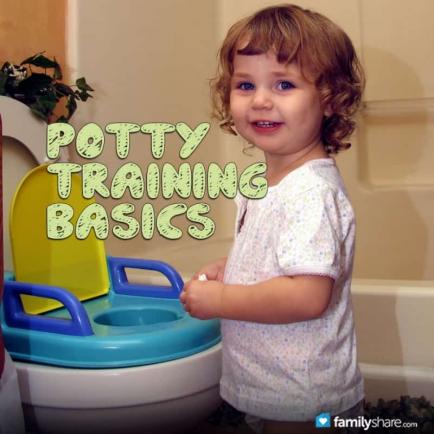
Are you tired of changing diapers? Ready to save money on diapering supplies and move your toddler into underwear? Does your toddler ask when it's his turn to use the potty? After toilet-training four children, I have a few tips to ensure success. Read on and decide which ones will work for you and your child.
Signs of readiness
Make sure your child shows signs of readiness for toilet training before jumping in. Children who are ready for toilet training are concerned with cleanliness, recognize when they have soiled their diapers, are able to vocalize needs and have words for elimination and show interest in others' bathroom habits.
Unfortunately, there is no magic age for readiness. Children are not capable of controlling bowel and bladder activity before age 1. Many children have some of the skills necessary between 18 months and 24 months, but other children won't be interested until age 3 or 4. Starting early doesn't necessary mean your child will be fully toilet-trained earlier, it might mean the process takes longer.
There are many methods for toilet training your child. For the sake of brevity, I am going to describe two. You know your child best, so choose one that fits his or her personality. Potty training definitely involves trial-and-error and no one method is fool-proof. If neither of these fits your child, there are many books and online resources you can consult for more ideas.
All in
Many parents gear up for a one to three-day session of potty training, with diapers ditched forever by the end of day three. For this method, you need to choose a block of time where you can stay home for a few days with few interruptions. Purchase supplies like underwear or training pants, drinks that will encourage frequent trips to the bathroom, a potty seat or chair that makes going more comfortable for small children and rewards like M&Ms and stickers for celebrating successful bathroom trips. Some parents call the first day a "potty party"� and enlist the help of a doll that goes potty to help.
On the day you begin potty training, encourage your child to be naked or put on the new underwear or training pants. Have him sit on the potty often and drink lots of fluids so bathroom breaks are necessary. Expect accidents as your child starts to learn what it feels like to control his bladder. Reward success with stickers, a small toy or a treat. Stay positive throughout the day. Consider having your child continue to wear a diaper at night until daytime dryness is well-established. I had my children sit on the potty as we read books or sang songs if I thought they might be able to have a bowel movement. If this sounds like something you would like to try, there are books and online articles available that describe this method in greater detail.
Child-led training
I joke that this is the "lazy mom" method for toilet training, but it is the one that worked best for me with three of my children. The key to this method is letting the child lead the first few phases of potty training and not being concerned about the time it takes to train. When most of the signs of readiness are apparent, start having what we called "undies practice."� Take the child to the store and have her choose a few pairs of new underwear. Explain that it's time for her to start growing up and learning to use the potty like a big girl.
Then, starting with once every few days and gradually increasing to daily, have the child wear underwear and sit on the potty often, perhaps until they lose interest or have an accident. Start with just an hour, but as the child shows interest and has successful visits to the bathroom, increase the time. If she has an accident, put a diaper back on or ask "do you want to be done with undies practice?"� and see what she says. Compliment her on doing well and encourage her to try to stay dry next time.
If your child is ready for toilet training, you can have a fully-trained child in about a month. If your child shows no interest and fights going to the bathroom, ease off a bit, but encourage sitting on the potty and wearing undies occasionally. Continue to discuss this important stage in life and how excited you are for her to wear underwear and be a big girl.
Possible problems
If, after several attempts or months of toilet-training, your child is not having success, consider visiting your doctor. Some children have weak bladder muscles or other physical problems a pediatrician can identify and help fix. Many children are so focused on playing that they do not like to stop what they are doing to use the potty. Parent cues to use the bathroom will have to continue for several months to a few years after toilet training occurs. Girls are more likely to have problems with bladder and urinary tract infections if they do not fully eliminate their bladders, although boys can get infections as well.
Don't be discouraged if your child has accidents often. Rather, try to identify the problem and work toward a solution. I have two sisters whose daughters struggled with toilet training for more than two years despite trying many different methods.
You and your child will feel accomplished when toilet training is complete. Don't worry if it doesn't happen in a day. Your child will learn to be successful in the bathroom and your diapering days won't last forever - just until the next baby comes along.

